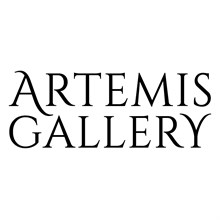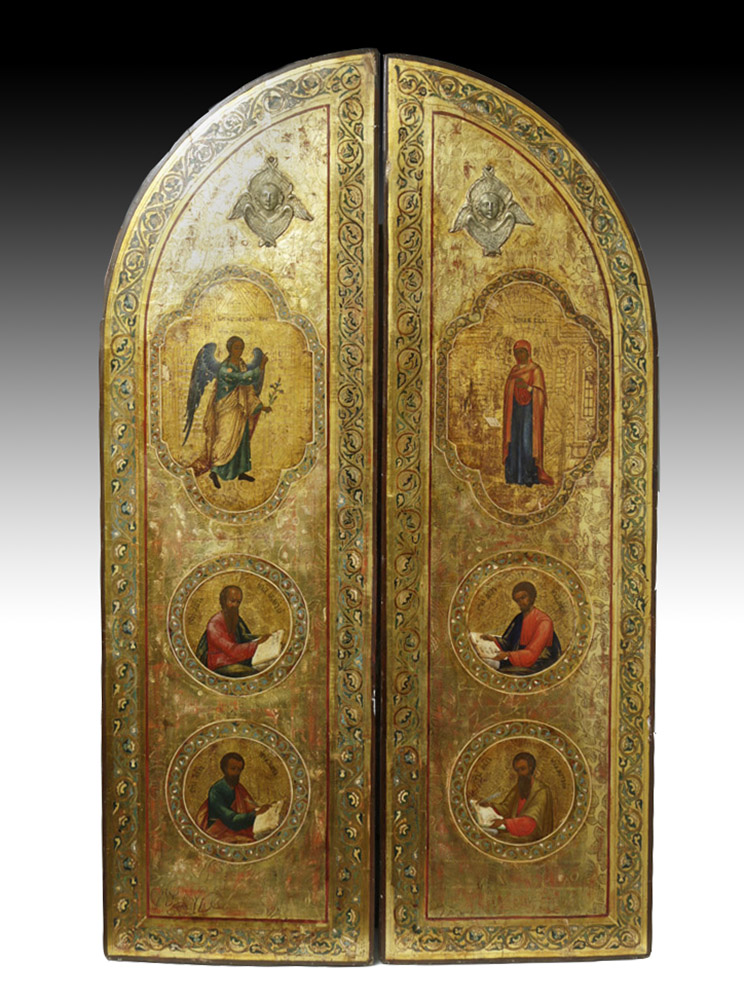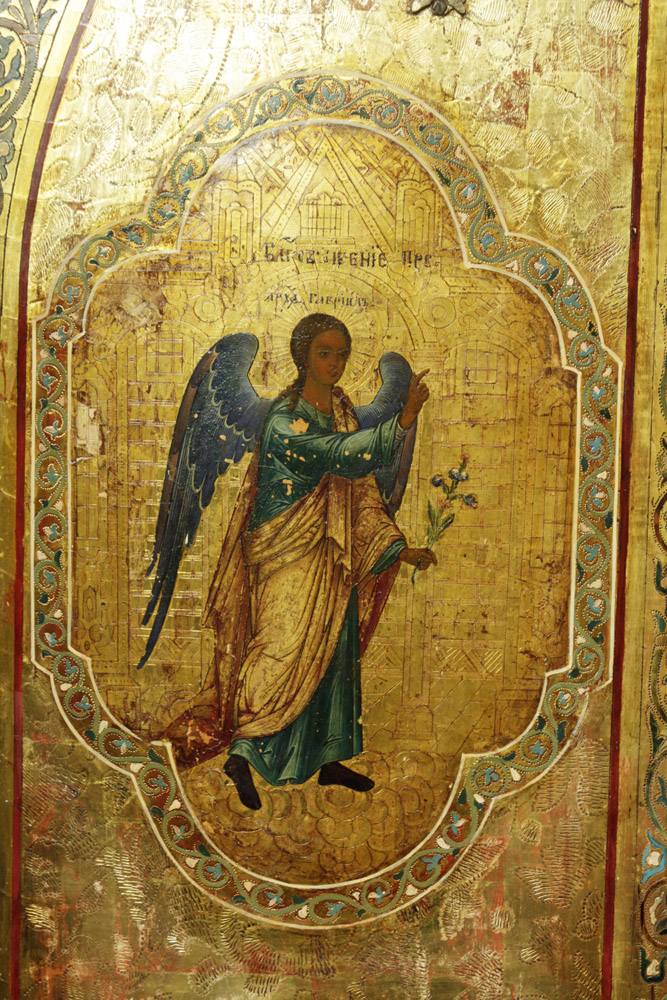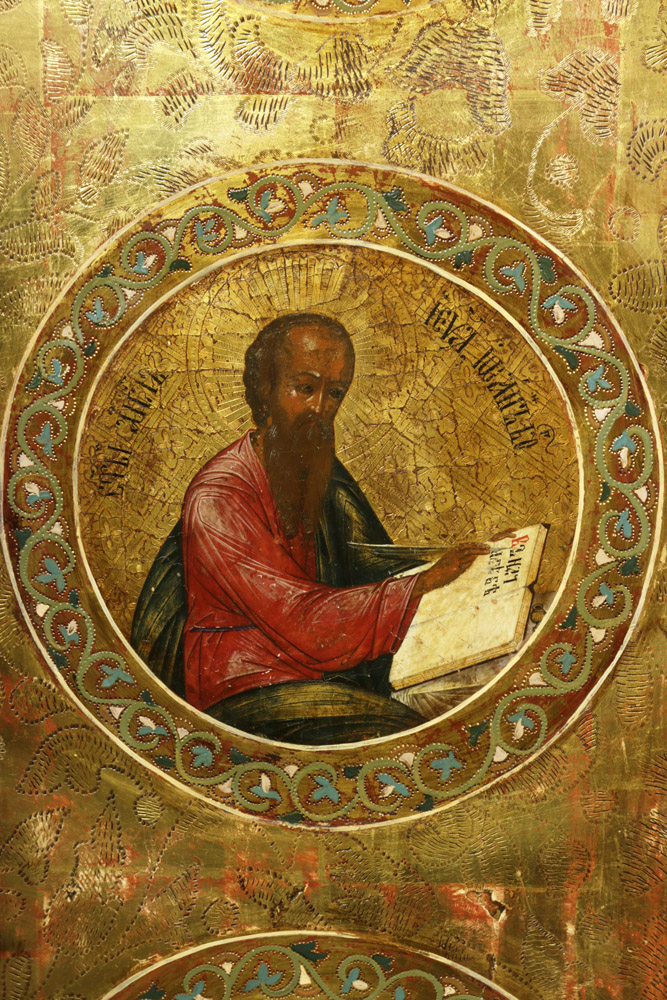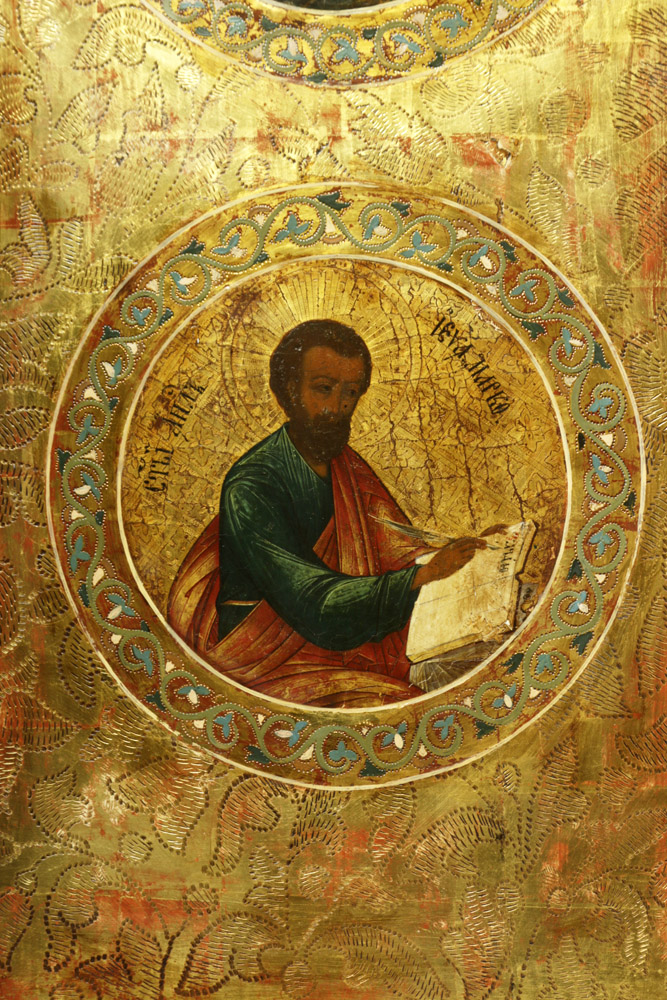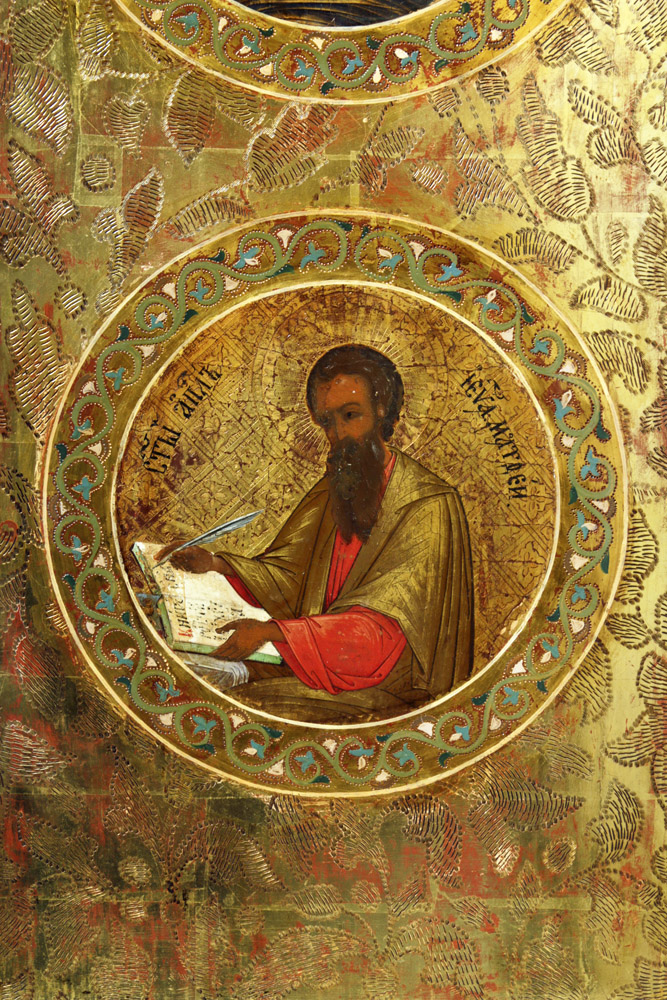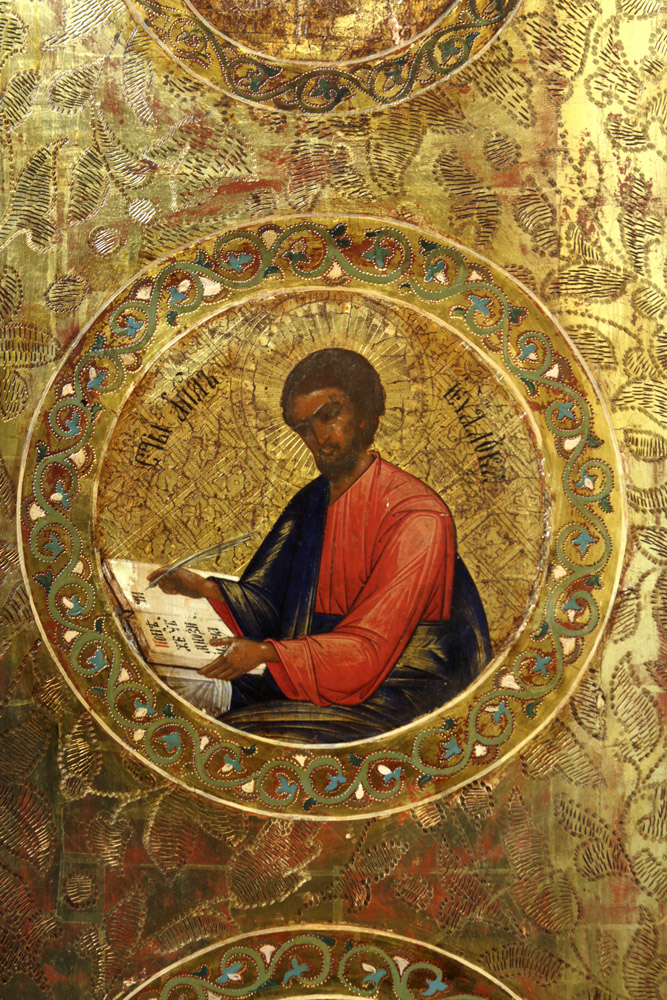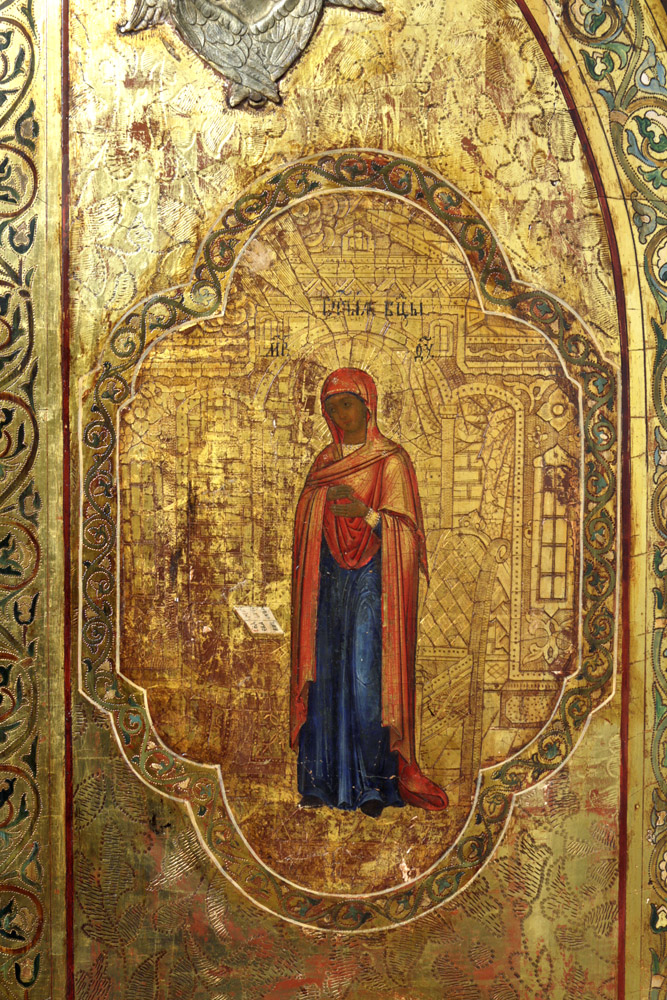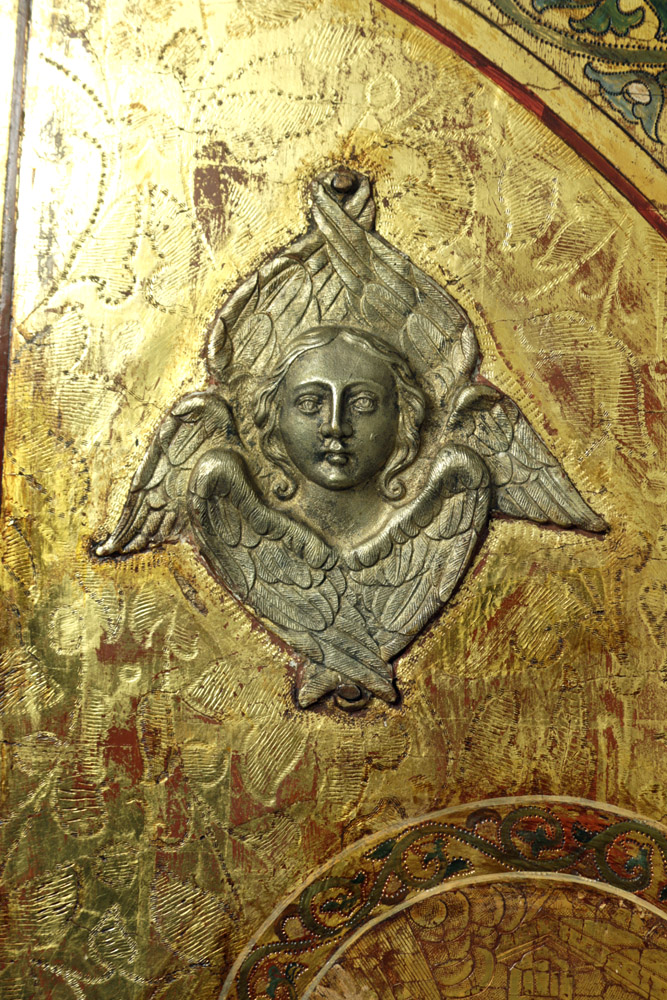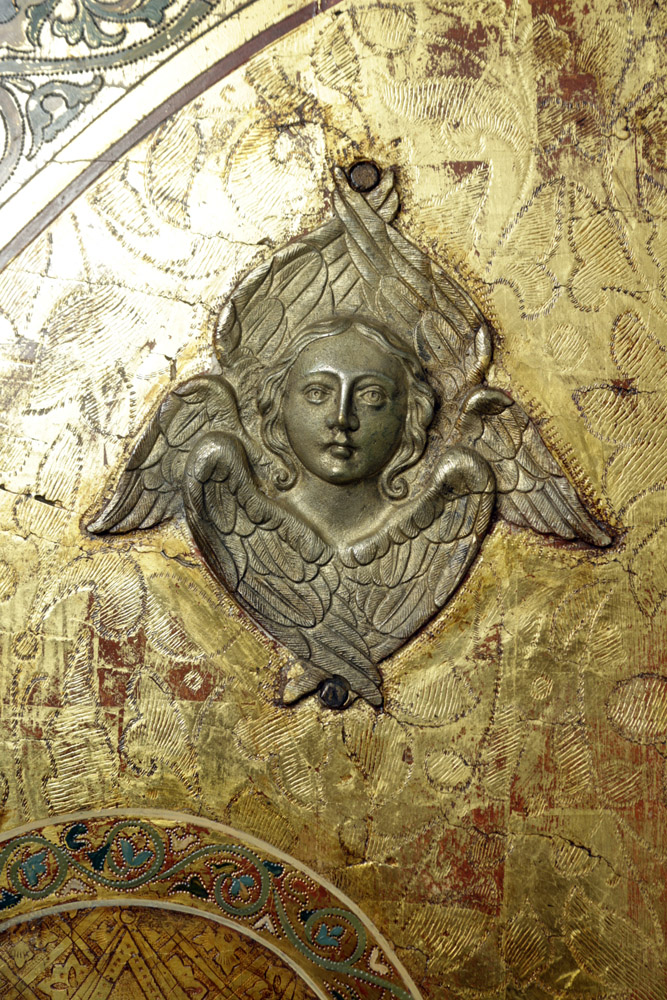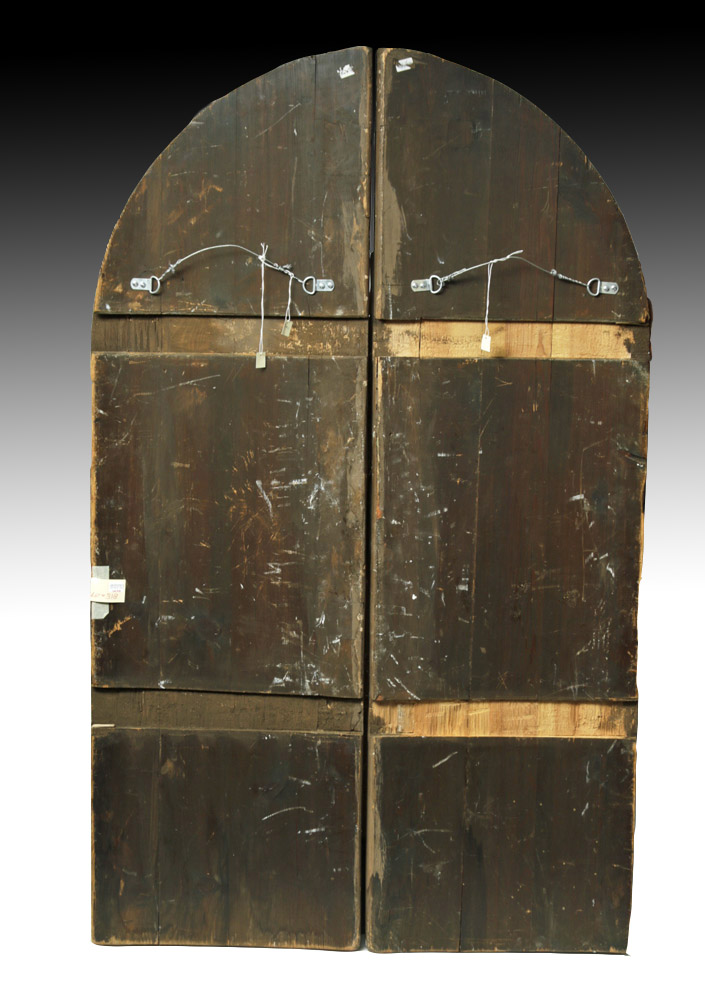19
Exhibited 19th C. Russian Icon - Royal Door Panels
Important Rare Russian Icons & Religious Art
Sale Date(s)
Venue Address
For Artemis Gallery LIVE delivery information please telephone +1 7208907700.
Important Information
Featuring a superb grouping of 18th and 19th century Russian icons from the esteemed collection of Lilly and Francis Robicsek, Charlotte, NC. Acquired over the past 50 years, many of these icons were exhibited at The Mint Museum of Art?s special exhibit, Windows Into Heaven, and published in their respective catalog. Also from the same collection are incredible and rare Spanish Colonial santos from Latin America, collected by the Robiscek's in Mexico, El Salvadore and Guatemala. These large, fine and incredibly detailed examples date from the 18th to 19th century.
Terms & Conditions
The following are the TERMS OF SALE for bidding in Live Auction, Wednesday, March 23, 2017.
AUCTION will start at 8 a.m. MT, 10 p.m. EST, 7 a.m. PST - Live Online / Absentee Bidding only.
Please read the following "Terms of Sale" carefully. These terms are applicable to all bidders in this auction, collectors and dealers alike. Please do not bid in this auction if you do not agree to all of the terms listed below. Your submission of bids in this auction constitutes your acceptance of these "Terms of Sale."
1. All items in this auction have been legally acquired, are legal to sell, and guaranteed to be as described or your money back.
2. This is an auction sale, not an approval sale. By bidding in this auction, the bidder personally guarantees payment. The auctioneer has final discretion in all matters. In case of dispute, the lot(s) in question may be resold. Lots will be sold in their numerical sequence unless the auctioneer directs otherwise.
3. HIGH and LOW ESTIMATES are provided for each lot for reference only.
4. No lots will be released / shipped until payment has been made in full. Payment(in U.S. funds) may be made via personal check or money order, via credit card (MasterCard, Visa or Discover), PayPal or Bank Wire Transfer. For PayPal payments please use "artemisgallery@gmail.com" email address for processing payments.
5. BUYER'S PREMIUM: A 24.5% Buyer's Premium will be added to the final price of each lot purchased through Artemis Gallery and will be paid by all bidders without exception.
6. CO SALES TAX: Appropriate Colorado Sales Tax will be added to all invoices, unless a valid CO seller's permit is on file with Artemis Gallery/Artemis Gallery Live prior to any bidding in the auction. Items shipped outside of CO (United States or international) are also sales tax exempt.
7. RETURN POLICY: If our description of the item is not as described, we will accept return of the item; however, WE MUST HAVE WRITTEN NOTIFICATION OF RETURN WITHIN TWO BUSINESS DAYS FROM RECEIPT OF ITEM BY BIDDER, as shown by FedEx, UPS or USPS tracking data, and the item must be received by us within ten days in the condition received. A written letter from a recognized expert in the field pertaining to the item in dispute must be presented for refund. No lots may be returned without prior written consent. Late remittance constitutes just cause for revocation of all return privileges. Return shipping is at the bidder's expense. In no event may any lot(s) be returned after fifteen (15) days from the date of the auction. As of April 10, 2017 ALL SALES ARE FINAL.
8. BIDDING will be conducted ONLINE / LIVE as the auction progresses. Bidders may place their bids LIVE, via PHONE or by leaving ABSENTEE BIDS via the Live Auctioneers auction catalog. Please keep in mind that Phone Bids will be accepted on a limited basis and must be arranged in advance.
9. SHIPPING: As a convenience to our buyers, shipping is handled in-house. All buyers will receive an invoice detailing their purchases, sales tax (if applicable), buyer's premium, and shipping/insurance charges. Items will be shipped only upon receipt of payment in full and will be insured for their full value.
**For shipments outside of the USA, customs and duties may apply upon entry into said country; this fee, if any, is the buyer's responsibility. Also, please be aware that Artemis Gallery will NOT falsify customs value on any international shipments - what you pay is what we declare, no exceptions. There are a small number of international countries we cannot ship to. If you have questions about this, please inquire BEFORE bidding**
9a. REQUEST TO DELAY SHIPPING FOR LOTS WON: We are happy to delay shipping on all paid lots for up to 30 days with no storage fees. After 30 days, storage fees will accrue based on a 2% of invoice total.
10. ESTIMATES for each lot are given only as a guide to help gauge bidding. Lots may sell for a price greater than or less than these estimates.
11. STARTING PRICES may or may not be the actual price at which any item will sell. At the discretion of the auctioneer, starting prices may be lowered to encourage bidding, but this is up to the auctioneer.
12. The auctioneer may open the bidding on any lot by placing a bid on behalf of the seller. The auctioneer may accept or decline any bid, or challenge to any bid, as he in his sole discretion shall determine.
13. ALL BIDDERS must register in order to bid.
14. In the event a successful bidder fails to make payment when due, Artemis Gallery reserves the right to re-sell the merchandise and bidder agrees to pay for the reasonable cost of such a sale and also to pay any difference between the resale price and the previously successful bid, together with any incidental costs of sale and disbursements.
15. If the auction invoice is not paid for in full when due per invoice terms, including any applicable credit card processing fees, the unpaid balance will bear interest at the highest rate permitted by law until paid in full. If the matter is referred to an attorney for collection, bidder agrees to pay all reasonable attorney fees, court costs and other collection cost incurred by Artemis Gallery to collect past due invoices and that the services of process by certified or registered mail, return receipt requested, shall be sufficient to confer "in personam" jurisdiction over bidder.
16. Buyer agrees that any claim of controversy arising out of, or relating to the formation, interpretation of performance of these terms and underlying transactions or the breach thereof, is subject to arbitration or judicial proceedings and shall take place within the County of Boulder, CO subject to the laws of the State of Colorado.
17. QUESTIONS? Feel free to email us at info@artemisgallery.com with questions prior to bidding or feel free to call us at 720-890-7700. Please be sure to ask all questions at least 30 minutes prior to auction start time, as we will not be able to take calls or answer emails sent to us during the auction.
Good luck!




















